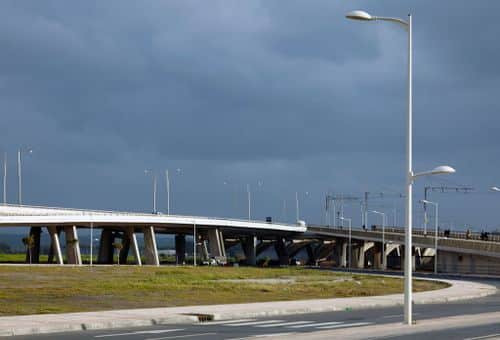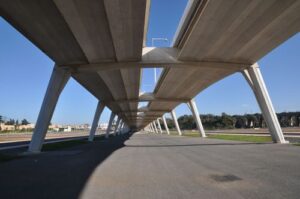The Rabat–Salé tramway, operational since 2011, serves as a crucial public transport link between Morocco’s capital, Rabat, and its neighboring city, Salé. To accommodate increasing urbanization and enhance mobility, significant extensions have been implemented, notably the expansion of Line 2.
Project Overview
The Line 2 extension added approximately 7 kilometers to the existing network, introducing 12 new stations—four in Rabat and eight in Salé. This expansion extends services to densely populated districts, including Yacoub El Mansour in Rabat and the neighborhoods of Essalam, Moulay Ismail, and Elkariat in Salé.
Construction and Investment
Initiated in October 2017, the construction of the extensions was completed at a cost of 1.7 billion Moroccan dirhams. The project received financial backing from the European Investment Bank (EIB), which provided a loan of EUR 40 million to support the development.
Operational Impact
With the extension, the Rabat–Salé tramway network now spans a total length of 27 kilometers, encompassing 43 stations. This expansion is projected to increase daily ridership by 40,000 passengers, bringing the total to approximately 150,000. The enhanced network aims to alleviate traffic congestion, reduce carbon emissions, and provide a reliable and efficient mode of transportation for residents and visitors.
Future Developments
Plans are underway for further extensions of the tramway network, including a 21.3-kilometer expansion towards areas such as Agdal, El Boustan, Youssoufia, Laayada, and the Rahma neighborhood. These developments are scheduled for the period leading up to 2028, reflecting a continued commitment to improving urban mobility and accommodating the region’s growth.
The Rabat–Salé tramway extension represents a significant investment in urban infrastructure, aiming to enhance connectivity, support sustainable transportation, and improve the quality of life for residents. As the network continues to expand, it is poised to play an increasingly central role in the region’s public transit system, fostering economic development and environmental sustainability.
Read also Work begins on East Africa’s largest oxygen plant in Tatu City

